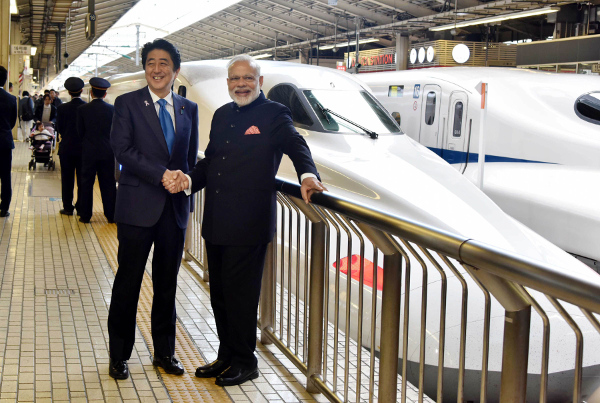Aiming to make the Rs 1.08-trn Mumbai-Ahmedabad bullet train project operational by December 2023, the National High Speed Rail Corporation Ltd (NHSRCL) has put pre-construction work for the 508-km-long High-Speed Rail (HSR) line on the fast track. In what has come as a boost, the Gujarat High Court recently dismissed 100 odd pleas challenging the land acquisition process for the project.
NHSRCL, the implementing agency for India’s first HSR project, has decided to start construction work on the green zone (cleared land) by April 2020, with the tendering process having been initiated. Says Achal Khare, managing director of NHSRCL, a special purpose vehicle (SPV) set up by the Ministry of Railways and Gujarat and Maharashtra governments, “Pre-construction activity is in full swing. Shifting of utilities like cables, oil wells and other structures, apart from 25,000 trees, enroute the project corridor has been taken up on war-footing.”
The corridor has been divided into 27 segments across Gujarat and Maharashtra. Out of these, tenders for nine major segments worth around Rs 50,000 crore have been invited and are likely to be awarded in the next few months. Tenders for the remaining segments will be awarded by the end of the current fiscal, Khare says, adding, “massive civil works will need to be carried out since over 90% of the line between Sabarmati and Bandra-Kurla Complex (BKC) in Mumbai is elevated.”
From the BKC where it would begin, the corridor would extend 21 km underground before it reaches Thane. Of this 21-km tunnel, 7 km would be undersea, a choice made to avoid damaging vegetation in the area. The Japan International Cooperation Agency (JICA) would fund nearly 80% of the project through a 50-year loan, with the remaining cost being borne by Gujarat and Maharashtra.
In all, there would be 12 railway stations on the line including the terminuses: Sabarmati in Ahmedabad and BKC in Mumbai. Of these, Sabarmati, Kalupur (Ahmedabad station), Anand, Vadodara, Bharuch, Surat, Bilimora and Vapi are in Gujarat, while the rest—Boisar, Virar, Thane and BKC—fall in Maharashtra.
NHSRCL officials have been liaising with ONGC, Gujarat Urja Vikas Nigam Ltd (GUVNL), Gujarat Energy Transmission Company Ltd (GETCO), the municipal corporations of Ahmedabad, Surat and Vadodara and the authorities in Maharashtra to shift utilities falling enroute the proposed link. Work for the relocation of railway buildings has started and five oil wells owned by the ONGC are being shifted. More than 1,600 electrical utilities owned by the two states are also being shifted, apart from 150 extra high voltage lines.
It is government and railways-owned land that would be largely used for the project. Out of the 1,400 hectares of private land needed, 620 hectares have been acquired so far. Since the deadline for the first trial run of the bullet train between Surat and Bilimora is August 2022, the land acquisition process is being accelerated. The NHSRCL is confident of land issues being resolved amicably since 6.5 times the published Jantri rate is being offered as compensation to landowners.
With trains being run every half an hour between 6 am and 12 am, 24 bullet trains would have to be procured from Japan. As part of the ‘Make in India’ initiative, six trains would be assembled in India. As per primary estimates, an end-to-end ticket would be priced at Rs 3,000.
Source: FE
Image Courtesy: India Legal Live
You may also like
-
Trade Connect E-platform For Exports Is Single Window, Fast, Accessible And Transformational: Shri Piyush Goyal
-
Dot Simplifies Approval Processes For Telecom Licenses And Wireless Equipment
-
Coal Production and Supply Trends on Positive Trajectory
-
Union Minister To Release Booklets On Promotion Of Indigenous Species & Conservation Of States Fishes
-
2nd India-Japan Finance Dialogue held in Tokyo on 6th September, 2024
